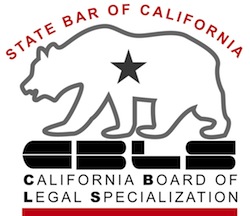Small business owners who are sole proprietors can enlist the power of bankruptcy’s Chapter 13 to rescue their business at a price they can afford.
Everyone thinks of Chapter 11 as the “keep the business and ditch the debt” form of bankruptcy. But traditional Chapter 11 is cumbersome and just flat out too expensive for most small businesses.
Enter Chapter 13. Think of Chapter 13 as a pared down Chapter 11.
- Creditors don’t get to vote on your plan of reorganization.
- You make a monthly payment.
- A trustee handles distribution of your plan payment.
- The automatic stay keeps creditors from collecting.
- Underwater liens can be stripped off of your assets.
- You continue to operate the business.
Chapter 13 makes rescuing a business both possible and affordable.
Chapter 13 vs. Chapter 7
The contrast between the chapters for a small business owner is stark.
In Chapter 7, the appointed trustee almost always wants any operating business shut down. Even if the business has no sale value, the trustee wants to avoid the potential liability of leaving the debtor in possession of an operating business. More on why that is so.
Not so in Chapter 13. Bankruptcy law explicitly authorizes the debtor (the person who has filed bankruptcy) to operate any business the debtor owns.
Another keystone provision in Chapter 13 is that the debts that aren’t dischargeable in the bankruptcy get paid ahead of the general unsecured creditors. [Except for student loans, which have no priority for payment and are generally non-dischargeable.
By law, the most important creditors are paid first; vendors and other creditors get whatever portion of the monthly payments remains after priority creditors are paid.
And liens with large face amounts can be stripped down to the value of the equity to which that lien attaches. So, seemingly huge liens can be shrunken to their real-world value.
Which businesses qualify for Chapter 13
The central requirement is that the business be owned by an individual. Corporations and LLC’s don’t qualify for Chapter 13.
Corporations, LLC’s and businesspeople with larger debts have an empowering new form of Chapter 11 created by the <a href=”https://www.bankruptcysoapbox.com/small-business-reorganization/” target=”_blank” rel=”noopener”>SBRA</a>
The individual filing must have debts that are below the statutory limits. Those limits just went up in May, 2022 to $2.75 M. That makes Chapter 13 available to lots more people. Remember, since you are a sole proprietor, you and your business are a single, legal person. So, your personal debt counts toward the limits along with your business debt.
Finally, you must be able to make monthly payment to the Chapter 13 trustee, starting 30 days from filing. Your payments can start low, and step up over the life of the plan.
How much do you have to pay creditors in Chapter 13
Chapter 13 is powerful and flexible. It may be just the tool you need to rescue your business.
More
Ruinous business lawsuit stopped by Chapter 13
Alternatives for struggling businesses
How to interview a bankruptcy lawyer
Image by Gerd Altmann from Pixabay






